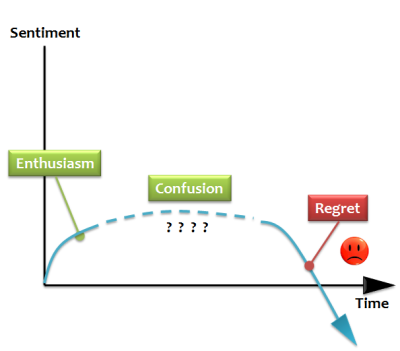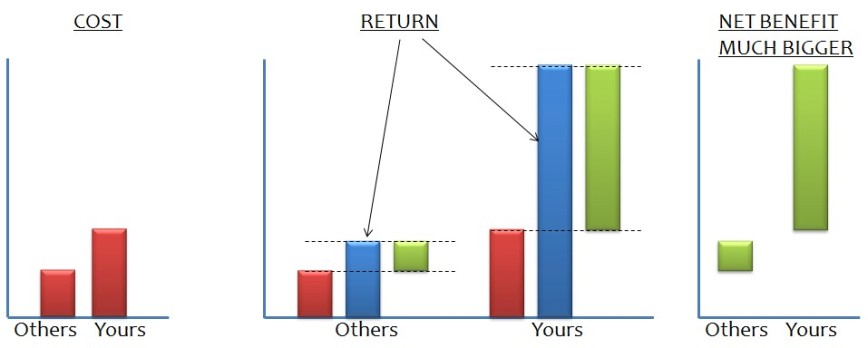
Recognise this ? Data silos everywhere. Disparate systems, and, seemingly, brick walls between them all. As our reliance on systems has grown, we have more of them to satisfy our business functions, and the integration problem becomes exponentially worse.
Consequences (1 – Internal)
The internal consequences of having data silos are serious, including overly costly processes, inaccurate information, duplicated records, and stifled collaboration.

Consequences (2 – External)
By far the worst consequence, however, is external. It’s about having no clear view of your customer. No “Single Customer View”. This is bad enough when you are trying to internally assess a given customer, but in a web and mobile enabled world, it often translates into the customer having partial data held in several different systems, and a completely disjointed and frustrating set of interactions.

Why it Happens
These silo’s propagate due to a number of factors, Mergers and Acquisitions, Departmental “Turf Wars”, lack of Strategic Vision, and more recently Cloud and Software-as-a-Service systems have become more ubiquitous, and have allowed departments to make their own purchase decisions, without enterprise oversight.
Solution
Many organisations rightly conclude that, rather than contemplate an impossibly risky “big bang” , where all systems are replaced, they need to migrate data into a place where it is more complete and coherent. Typically into an ERP, or CRM system, or data warehouse.
Having done this several times over the years, I’ve tended to call this process “Data Harmonisation”.

There are two fundamental aspects to this endeavour. The first (perhaps obviously) is some sort of technology platform to do the various data transformations/re-formats/matches etc. The second is expertise, and it’s this area which is often overlooked.
It is simply impossible to get good results by throwing technology at the problem. What’s needed is solid expertise around all-things-data. The whole nature of this endeavour is about bringing together data from differently structured databases, and performing complex things with that data.
It’s not just about re-formatting data, but also much more sophisticated processes, for example: identifying where there is a “match” (e.g. fuzzy matching of records from different systems where these might actually apply to the same customer).
As mere mortals, we understandably focus on the tangible stuff, so , the “system” is something we associate with the things we see on the screen, however, in a Data Harmonisation process, it’s actually the data and it’s structure which is vital. This is where data expertise is needed.

In my experience, this expertise is actually the primary determinant of whether a data harmonisation project will succeed, and NOT the technology platform which is chosen.
So I guess the message here is .. if you are looking down the barrel of a data harmonisation project .. then getting an expert is vital.






















